 |
 |
 |
| |
VIRAL AND HOST MEDIATORS OF PERSISTENT LOW-LEVEL VIREMIA
|
| |
| |
CROI 2023 Feb 20-23
Program abstract
Background:
Persistent low-level HIV-1 viremia (pLLV) can occur in people with HIV despite high adherence to antiretroviral therapy (ART), without significant drug resistance, and due to unclear mechanisms.
Methods:
We enrolled 8 ART-treated participants with ≥3 HIV-1 RNA levels between 40-1000 copies/mL over 24 months. Near-full length sequencing of the proviruses and pol-env sequencing of plasma HIV were performed. Matched integration site assay was used to identify the host chromosomal integration sites and ChIP-seq data from primary total CD4+ T cells was incorporated through the ROADMAP database. CD4+ T cell transcriptomic profiling and HIV-specific CD8+ T cell reactivity were compared to ART-suppressed comparators. Those intact proviruses contributing to plasma viremia were defined as “producers”, and those that did not contribute to viremia as “non-producers”.
Results:
Participants had median age of 61 years, ART duration of 17 years and pLLV of 32 months. Median (range) of tenofovir in dried blood spots was 3702 (2771-6684) fmol/punch, consistent with high cumulative adherence. Plasma pLLV sequences were comprised primarily of large clones without evidence of viral evolution over time. In 38% of participants, producers harbored 5’-deletions in the packaging site. Compared to 10 ART-suppressed comparators, pLLV participants had a significantly larger intact reservoir in peripheral blood (p=0.001). Compared to non-producers, producer host integration sites were enriched in chromosome 19 and were in closer proximity to histone marks H3K9me3 and H3K36me3. Compared to ART-suppressed comparators, pLLV demonstrated significant upregulation of anti-apoptotic genes in CD4+ cells, with downregulation of pro-apoptotic pathways and type I/II interferon-related genes. There was no significant difference in HIV-specific CD8+ T cell reactivity between pLLV and ART-suppressed comparators. Producers harbored more HLA escape mutations compared to non-producers (p=0.04), and this difference was most prominent in nef genes. Nef escape mutations and HIV-specific CD8+ T cell responses were strongly correlated (r=0.9, p=0.008).
Conclusions:
These results demonstrate that non-suppressible HIV viremia is driven by the critical intersection of factors at the viral genetic, epigenetic and cellular level (Figure). This study represents the most comprehensive assessment of persistent low-level viremia to date and provide insight into ART-independent factors necessary for HIV clearance.

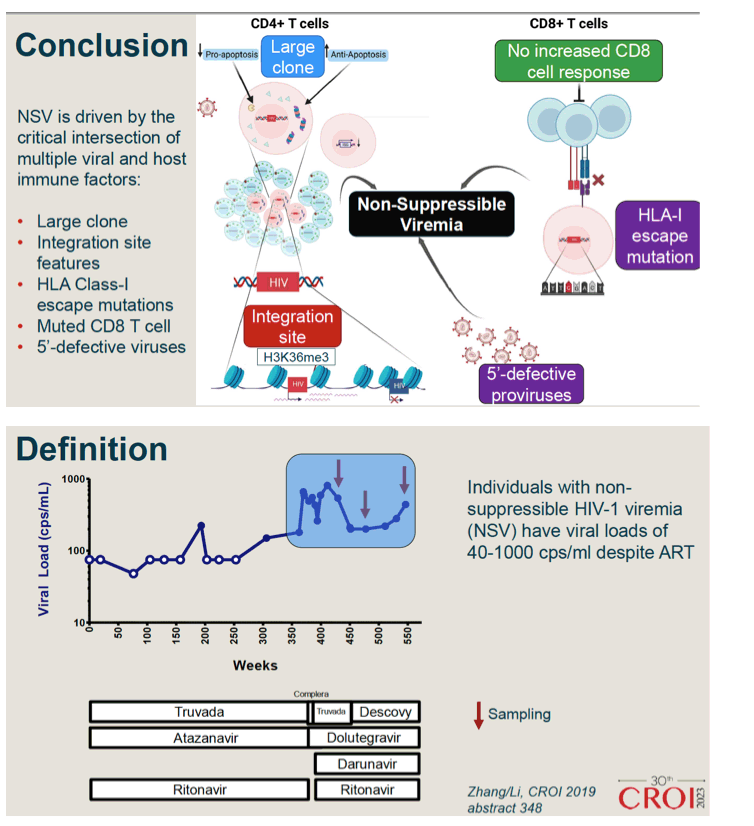
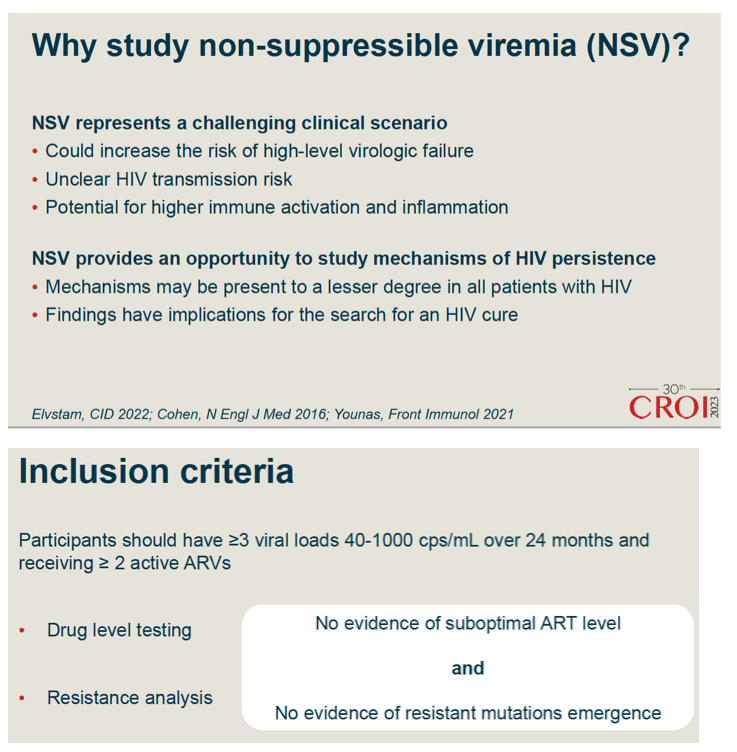
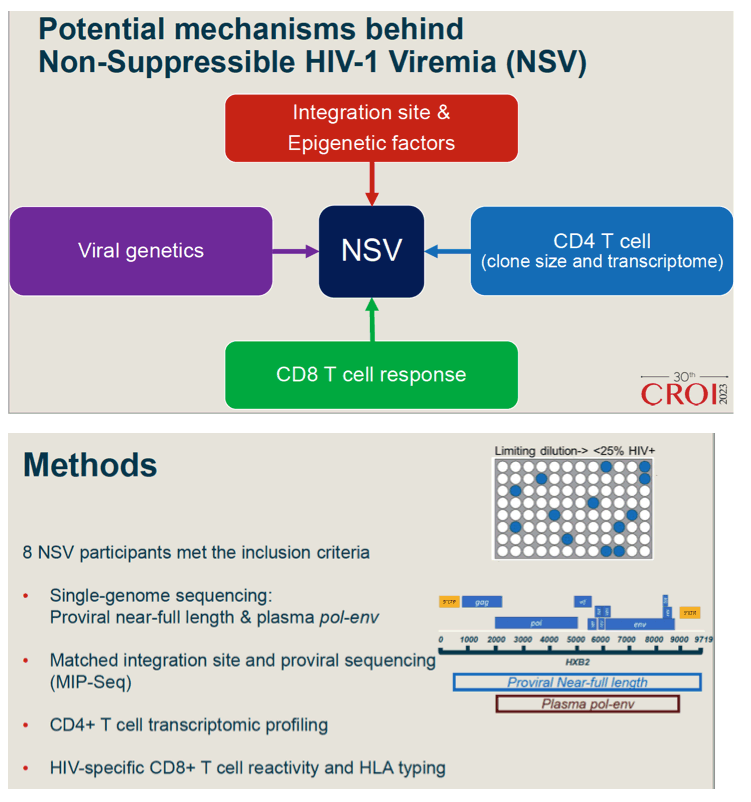
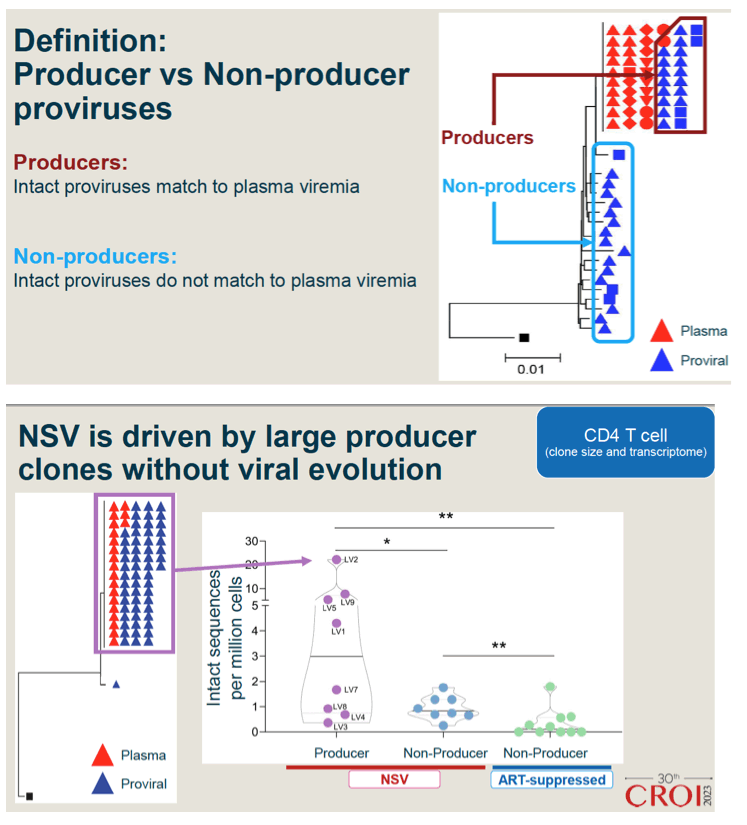
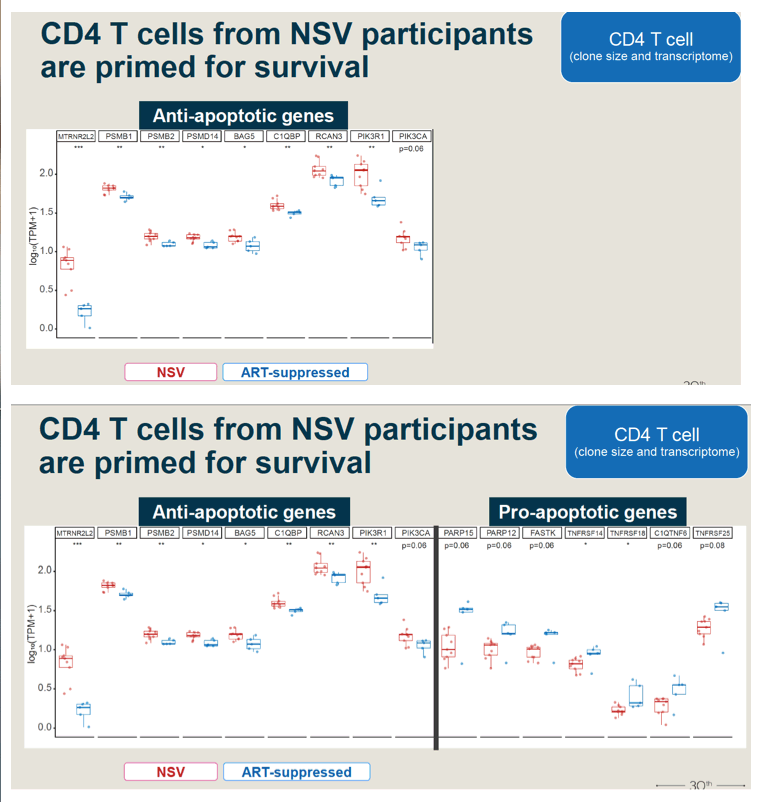
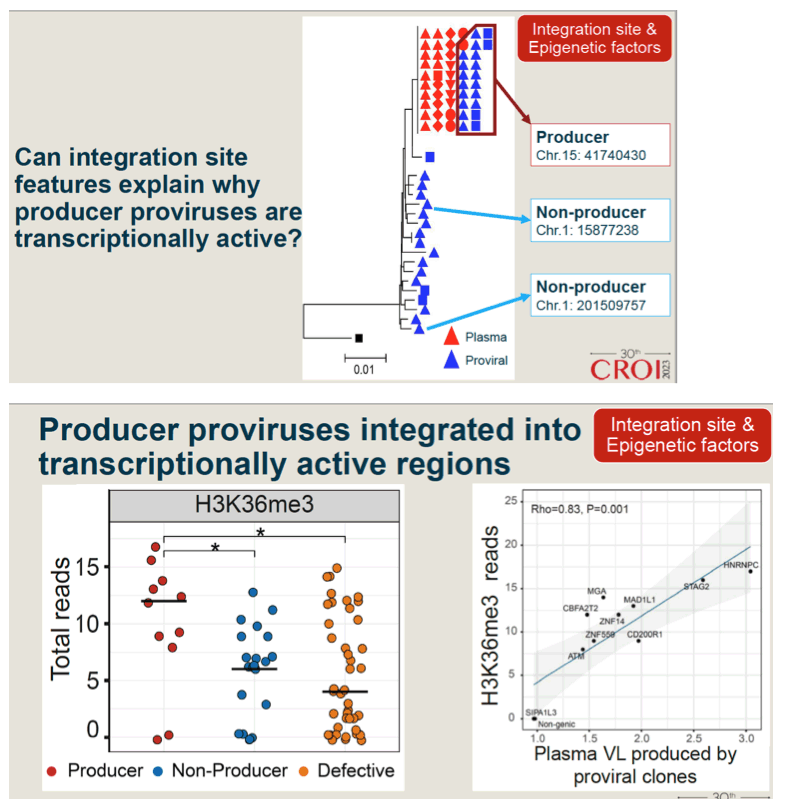
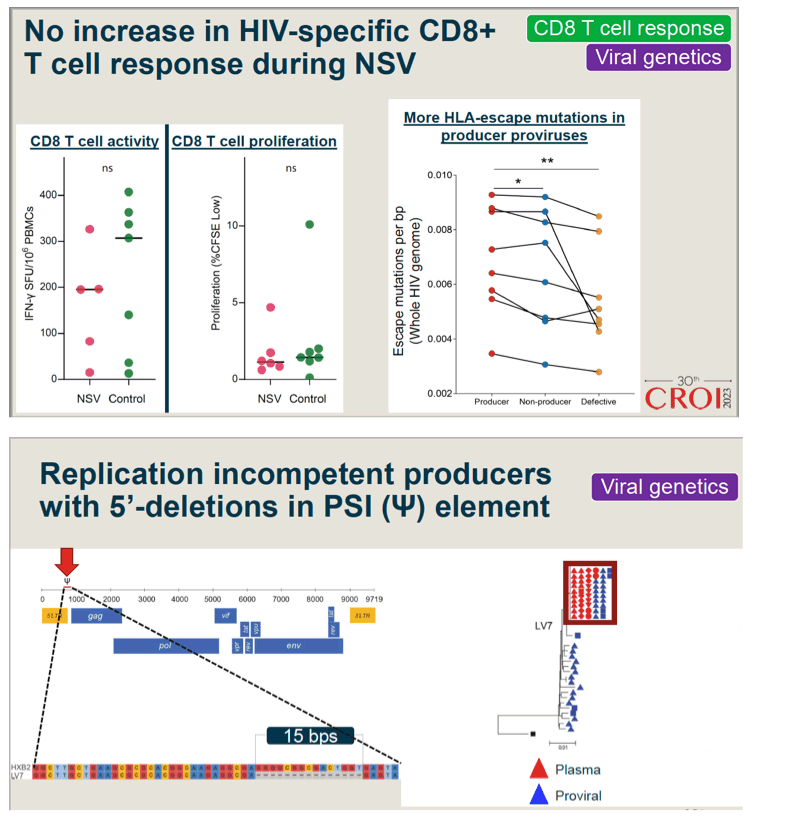

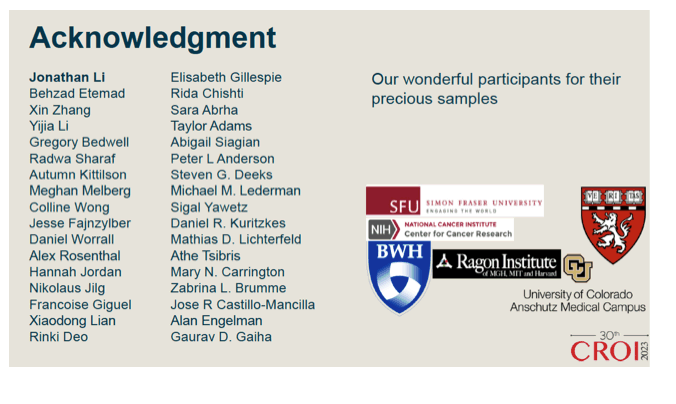
|
| |
|
 |
 |
|
|